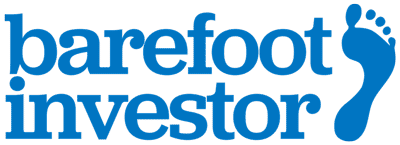Real Estate Mistakes: How to Turn $90,000 into $2.4 million
I’m writing this to you today from my study, which overlooks the rolling hills of my family farm. It’s really peaceful out here.
And, if you drive up to the top of those rolling hills, you can catch a glimpse of a smaller farm that’s just down the road, which was once marketed as Secret Valley.
“Set 45 minutes from the Melbourne CBD, the Secret Valley Estate is 258 acres of breathtaking, beautiful landscape and picturesque views of the Macedon Ranges.”
A few years ago, busloads of property investors would do field trips to Secret Valley.
They’d wander around the paddocks, sizing up what they were told was a canny investment.
The idea was simple: Secret Valley is on the edge of the Melbourne sprawl. Eventually it will be swallowed up by suburbia. And if you were smart enough to own an option on a few plots of land in the Secret Valley Estate, well, you could become very, very rich.
How rich?The marketing pitch that got the property investors on the bus was that if you invested $120,000 you could turn it into $1.2 million.
OK, so if you’ve been reading my column for a while, you won’t be surprised to hear that the investors in Secret Valley got roughly the same treatment that my ewes receive when I put a few daddy rams into the paddock.
A few years on, the only secret around Secret Valley is where all the investors’ loot ended up.
That case is still before the courts, which means I can’t really comment.
So to learn a bit more about “land banking”, as it’s known, I called up an old spiv who was up to his neck in it years ago.
He told me that he’d explain how the game worked, on one condition: that he be totally anonymous. Which is totally understandable … especially when you read what he says.
HERE’S his explanation of how land banking works in the get-rich-quick market:
“You buy rural land for $10,000 an acre. You then turn around and market it to investors as a ‘rezoning opportunity’. The sales pitch is that investors could make 10 times their money when it’s developed. The investors think they’re on a winner, and they’ll fight to buy that same acre for $400,000 a pop. All up, you’ve turned a $90,000 investment into $2.4 million.”
So how is it possible to convince people to buy these plots of land?
He explains:
“You need the best salespeople, and the best salespeople are women. There aren’t many of course, but they’re absolutely dynamite. No one thinks a woman will rip you off, right?
“It works like this. They make three calls.
“The first is to deliver a brochure — something elaborate, expensive, and high quality — lots of bullshit.
“The second call is to find out how much money they have. No one wants to waste their time. They’re getting to know the investor, asking about their kids and stuff, but really all they’re doing is drilling down to see if they have any money.
“This is where it’s easy. Most people have access to their retirement funds. That’s the big opportunity … that’s the honeypot! They look upon it as dead money and are willing to gamble with it. They’re a bit more wet behind the ears in Australia — they have this belief that property never goes down.
“The third call is to land the sale. If you have a client who has money, they’ll pull the trigger. However, you don’t just want to sell a piece of field for $10,000 to a guy who has $1 million. You want to flog him more. The technical term is ‘load up the client’. Generally, if they buy once, they’ll buy five times.”
“LOOK,” he continues, “I graduated from doing small time deals. Suddenly I went from having no money in my account to having $750,000 … in three weeks.
“It’s a fool’s paradise, though, because it doesn’t last. It never lasts. You’re earning $200,000 a month, so you buy a fancy car and you fly first class. But then everything catches up with you. The press catches on to it, investors get shirty, and instead of earning $200,000 a month, you’re earning $20,000.
“I didn’t feel good about myself when I was doing it. Of course. I had really low self-esteem. I drank a lot to block out the reality. I didn’t feel worthy, so I got rid of the money as quickly as I could.
“The truth is that I even got scammed myself by another crowd. Overall, I think I turned over $15 million. You’d expect me to have $10 million. I don’t.”
SO how did it end?“
We could have sold more plots if it weren’t for articles in the newspapers. That’s what screwed us up. People would Google stuff and it made our job almost impossible. We ended up closing ourselves down and heading overseas — the writing was on the wall.”
Except it wasn’t.
This old spiv left the game seven years ago. In the meantime, there’s been land banking schemes from Bendigo to Ballarat, from Shepparton to Secret Valley. It’s been reported that, in the past few years, thousands of Aussie investors have sunk more than $100 million — and possibly as much as $300 million — into land banking schemes. Strewth!
So, as I wrap this column up, there’s probably one last question left unanswered:
Aren’t I effectively doing a bit of “land banking” with my farm?
No.
As I type this I’m watching a few grain-fed sheep fertilise my drought-ravaged paddocks. Seriously, there are better investment opportunities going round. But ... it sure is peaceful out here.
Well, most of the time.
Tread Your Own Path!
